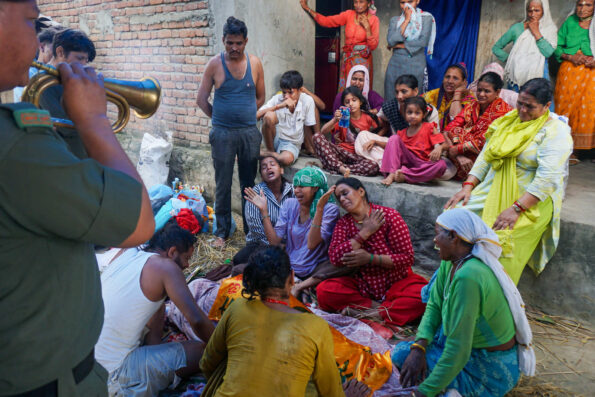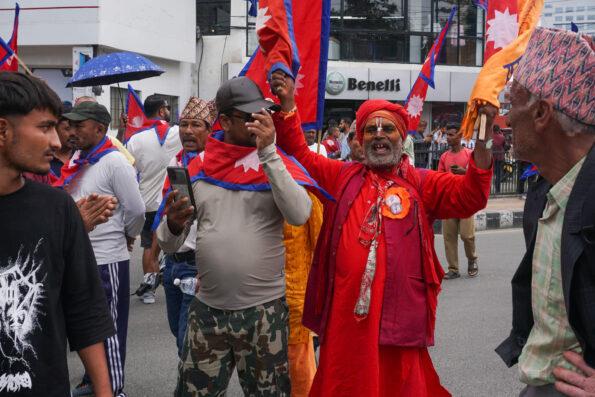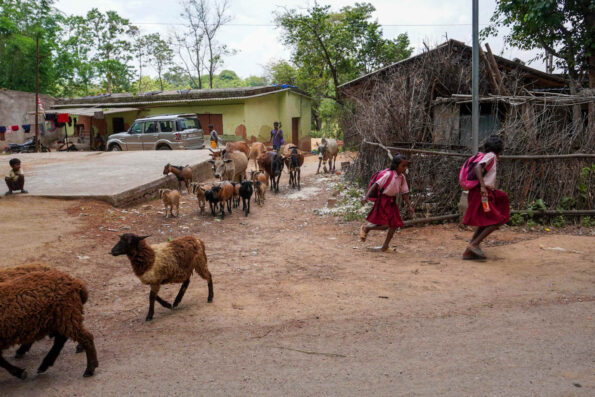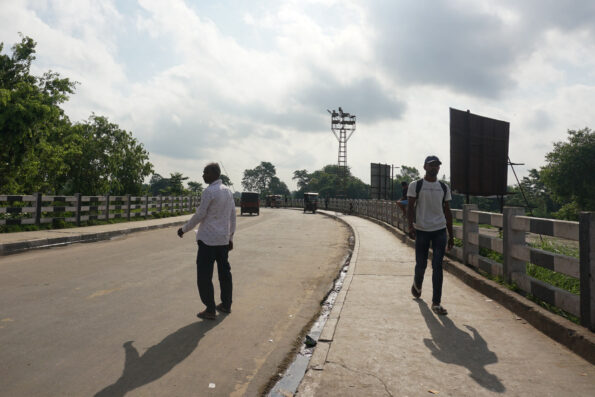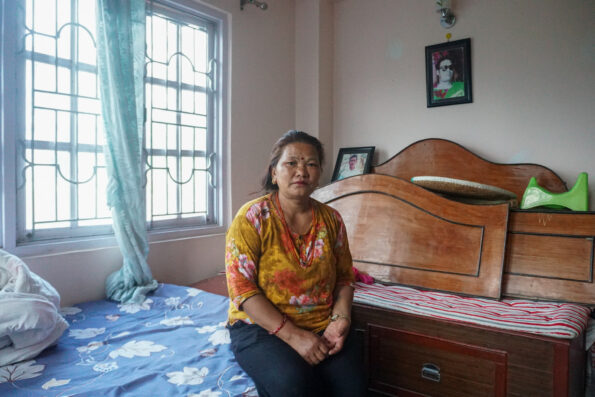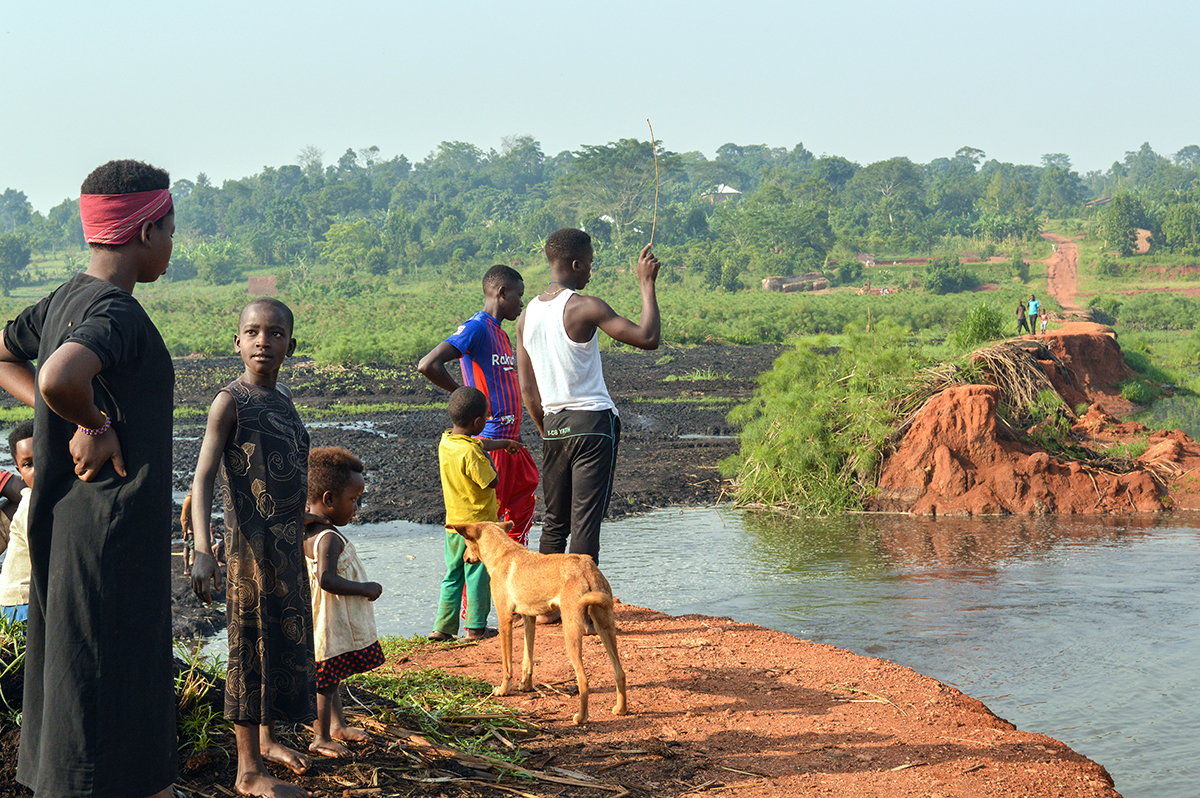
Nakisanze Segawa, GPJ Uganda
Schoolchildren stand by the banks of the Mayanja River, which flooded in November and brought down a part of the Mende Road bridging the Mende and Bubbale villages. Some parents in Bubbale had to pull their children from free public primary schools in Mende and put them in private schools in Bubbale as a result.
WAKISO, UGANDA — When a flood washed away a section of the bridge connecting Bubbale village with the larger community of Mende, Julius Kasumba considered his options for getting his two sons to school.
They’d attended Victor Primary School in Mende on a scholarship for the past two years. Kasumba thought the local government would quickly repair the bridge, but months passed with no change.
People in Bubbale say life came to a standstill. Traders couldn’t take their goods to the market in Mende. People who fell ill were forced to seek treatment at expensive private clinics in Bubbale instead of the free public option in Mende, even though the river is narrow enough that people can stand on either side and easily wave or even shout to one another.
And schoolchildren were stranded.
Before the flood, the boys’ walk to school over the bridge known as Mende Road took about 30 minutes, Kasumba says. After it collapsed, he thought about sending them by an alternate route in a taxi. But that trip would have cost about 50,000 Ugandan shillings (about $13) each day, which he says is too expensive. Plus, he says, the journey would take four hours.
“This would be exhausting for my sons to make every day to and from school,” he says.
There was just one option, Kasumba says: Swim across the Mayanja River. Other people were doing it, so Kasumba and his sons gave it a try.
They nearly drowned.
After that, Kasumba says, both of his sons began to live at their school’s boarding section.



Frustration over the unrepaired bridge – which was a berm-like strip of earth that spanned the river – is so great that people still try to swim across.
Three people have died trying to swim across the river since November, says Steven Busulwa, a village council member in Bubbale. And despite the danger, people who live in Bubbale say they’ll continue trying to swim across until the bridge is rebuilt.
There’s no sign of when that might happen.
Matias Lwanga Bwanika, chairman for the Wakiso District’s council, says funds for road projects in the district are scarce. The Mende Road is more than three decades old, he says. Like others in the district, the structure is made from murrum, a type of soil also used in constructing buildings, and is held up by culverts. It can easily be washed away when there’s heavy rains or flooding, he says.
Building roads that can withstand flooding is a task that almost seems impossible.
“As a district, we were allocated 6.5 billion shillings ($1.8 million) this year to construct roads, which is little money compared to the previous fiscal year where we were allocated 9 billion ($2.5 million),” he says.
The Mende Road is not among those that the district plans to repair in 2019. Money for repairs in that area will be allocated from the 2019-2020 budget, says Bwanika, meaning that local people will have to wait as long as a year before they can walk from Bubbale to Mende again.
The Ugandan government made road network improvements a priority in 2008, when it created the Uganda National Roads Authority (UNRA).
There were 48 UNRA road projects in the works as of January 2018, but PesaCheck, an independent East African fact-checking initiative, found that only 37% of those projects were fully funded by government. The rest were jointly funded by the government and donors, or solely paid for by donors.
The Ministry of Works and Transport received the largest of Uganda’s 2018-19 sector allocations, 4.8 trillion Ugandan shillings ($1.3 billion). A large portion of it went to the UNRA. The same ministry took the biggest piece of the pie in the previous fiscal year.
Meanwhile, people in Bubbale are growing impatient.
Topista Namayanja says her family feels stuck. Her five children were out of school for three months until she took them to a private school nearby. It’s expensive, she says, but she had no choice.
“I could not allow them to swim across the river,” she says.
Nakisanze Segawa, GPJ, translated some interviews from Luganda.


